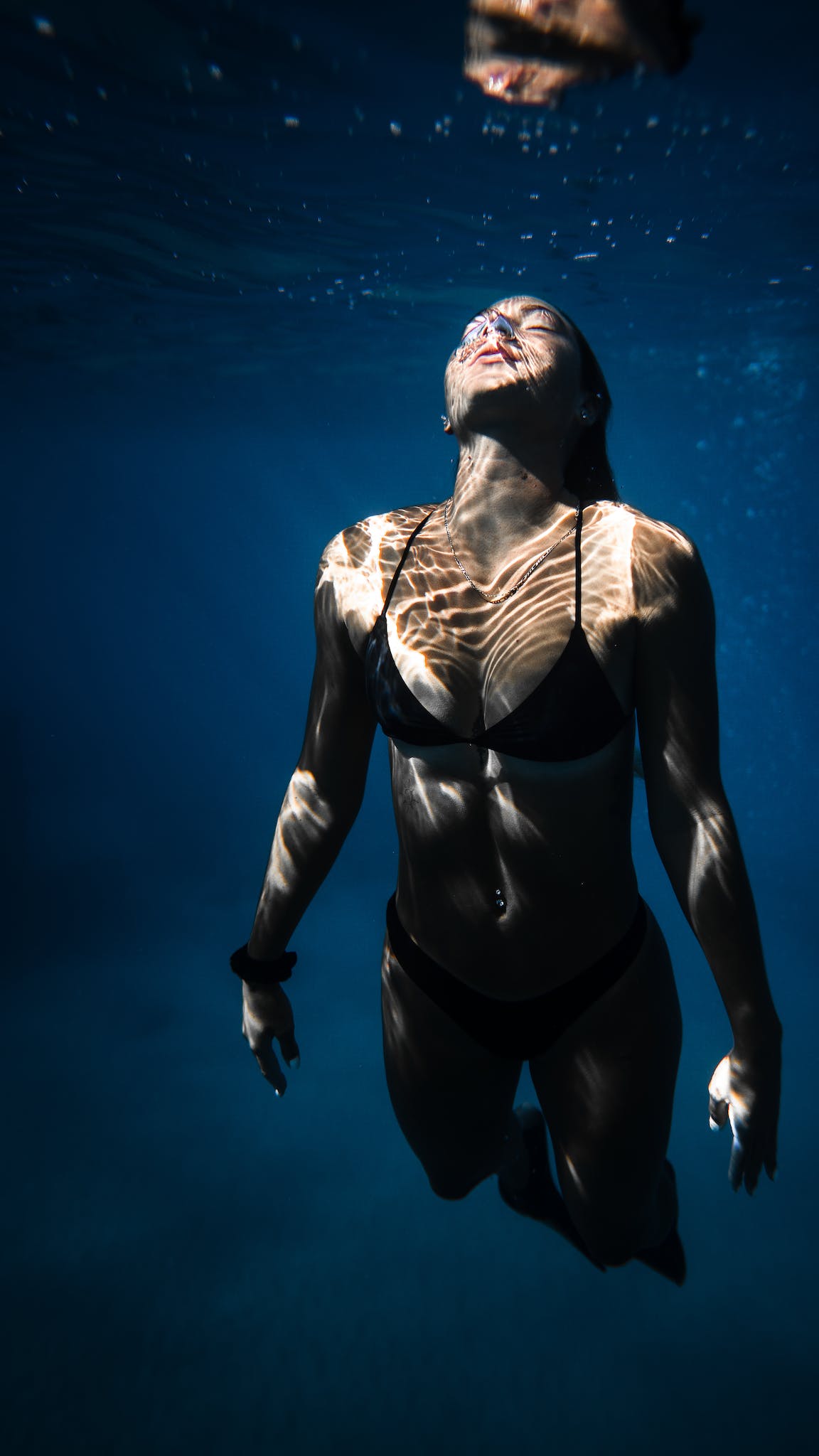Mastering Triathlon Swim Training

Mastering Triathlon Swim Training
Triathlon swim training differs significantly from cycling and run training in terms of complexity, duration, and intensity, and there are several valid reasons for this. Swim workouts often involve shorter intervals and total workout time. Traditionally, some swim coaches have used shorter intervals to provide more frequent technical feedback. The lengths of pools (25 yards, 25 meters, or 50 meters) facilitate this frequent feedback. Swimming, being highly technical, benefits from ample feedback and instruction, leading coaches to develop sessions with shorter reps and frequent rest intervals. Additionally, 90% of competitive swim events are approximately four minutes or shorter, which is quite different from triathlon cycling and running training.
Shorter swim durations with frequent rest intervals allow for higher intensity compared to continuous swimming. Most triathletes can handle this high-intensity load in the pool more easily than while cycling or running. I have enjoyed learning from bike and run coaches, experimenting with their favorite workouts, and applying those lessons to swim training. Conversely, some successful triathlon coaches have incorporated swim coaching techniques into bike and run sessions with great success. Being open-minded and not constrained by tradition can optimize training methodologies.
I believe shorter intervals help build fitness at the start of the training year, progressing to longer intervals as the season advances. By breaking the workload into shorter swim distances, athletes can train at higher outputs. Shorter intervals also facilitate technical work, such as improving tautness, providing additional technical benefits. The higher load in the pool with faster recovery rates results in improvements without undue cumulative fatigue. For example, the ocean swim workouts in Santa Monica involve loops of five to nine minutes in duration with high intensity, allowing plenty of opportunities for rest and recovery between repeats. This approach yields greater gains from race-specific sessions compared to swimming at a steady aerobic pace for the entire workout.
Workout Architecture
Every workout typically consists of three segments that remain consistent: warm-up, pre-main set, and main set. While the complexity and duration of these segments may vary depending on the training phase, they form the foundation of each session. The structure of a workout is shaped by the demands and focus of the current training phase. For example, during the technical phase, the warm-up will be longer compared to the race-ready phase.
Warm-Up
The warm-up is essential for activating the body and preparing for the workout ahead. Triathletes often feel tight or fatigued from previous sessions, so the warm-up helps to loosen the body and reduce the negative impact of accumulated fatigue. Additionally, it minimizes the risk of injury and maximizes the benefits of the upcoming main set.
Pre-Main Set
This segment focuses on stroke mechanics and technique while gradually elevating the heart rate to prepare for the main set. The duration of the pre-main set can be longer during the technical phase, where there is a greater emphasis on drills. Skills learned in this phase are incorporated into the main set, which is shorter and less intense than later phases, focusing on recovery and technical improvements.
Main Set
The main set is the core of the workout, designed to provide the greatest training value. During the build phase, the main set becomes longer to develop muscular endurance and power. This phase follows a 13-week cycle with three-week microcycles, progressively increasing intensity and distance. During the sharpening phase, the main set focuses on fast 100- and 1,000-yard/meter time trials, incorporating speed and pace work similar to non-triathlete swimmers’ regimens.
In the open-water skill-building phase, new technical elements and skills specific to open-water swimming are introduced. Skills like deck-ups, pace lining, sighting, drafting, and pack swimming are initially practiced in the pool before being applied in open water. These skills are first introduced during the pre-main set and then integrated into the main set at higher intensity.
In the race-ready phase, the main set’s complexity changes again to reflect race-specific conditions. Warm-ups become shorter and mimic race day routines, incorporating open-water skills into main sets. For instance, a main set might involve 10 × 200 yards or meters, each from a dive with a fast 50 at race pace, multiple sightings every lap, and a fast finish with a deck-up.
Cooldowns
I am not a strong proponent of long, dedicated cooldowns unless they serve an additional purpose. To optimize training time for triathletes, I often end sessions with a pull set, incorporating technical work into easier swimming. These pull sets, performed at 70–75% effort, focus on technique using a buoy, band, and snorkel, helping to refine stroke mechanics and aid recovery. After high-effort workouts (90% or higher for more than 15–20 minutes), I prescribe specific cooldowns, though they are typically short and pulling-based.
Architecture of a Training Week
Some coaches prioritize weekly sessions, categorizing them as A, B, or C workouts. Professional athletes are expected to complete all sessions, while age-groupers should prioritize A sessions and only do B and C sessions if time allows. During the race-ready phase, the open-water swim is the priority, becoming the most important workout of the week.
For instance, athletes might swim three times a week, with two A sessions on Tuesday and Thursday and a B session on Saturday or Sunday. If an A session is missed during the week due to travel, sickness, or other commitments, it should be replaced with the B session on the weekend. The focus is on completing the two A sessions each week.
The “Mambo” Session
The A-priority session, known as the “Mambo,” is a staple in our build phase, developing endurance, power, pacing skills, and mental fortitude. We start with four to five rounds, depending on the swimmer’s ability level, and progress to eight rounds by the end of the phase. The Mambo set is a benchmark workout, repeated throughout the year to measure performance gains. In addition to the Mambo, we use 100- and 1,000-yard/meter time trials in January and April to provide objective feedback on progress.
Key Swim Sessions
Key swim sessions should be scheduled before major run or bike workouts. Swimming after a run aids recovery and loosens muscles, but running before a key swim can compromise the swim session. Ideally, key swim workouts should be placed at the start of the day, especially when training in hot and humid conditions to complete key workouts before temperatures rise.
This approach ensures the greatest overall gains for athletes across all three sports, balancing the demands of swimming, cycling, and running for optimal performance.
Workout: The “Mambo”
Warm-Up
- 10:00 of easy, fluid swimming
Not a hard stroke is taken. Depending on fitness and ability, this could be 400–800 yards/meters.
Pre-Main Set
- 8 × 100 as 50 kick/50 swim, with fins and a snorkel, progressing effort gradually with every two 100s from easy to Ironman effort
- 5:00 swim, integrating the technical elements executed in the prior set
We want to see a progression of heart rate here while we focus on stroke mechanics. This technical work could take 15–20 minutes, so we are now almost 30 minutes into the workout. Your body is warmed up and ready to absorb the main workload. We would rarely begin the main set without this type of progression unless we were in the race-ready phase.
Main Set
- 4 × 100 as follows: 100 at 70% effort, 100 at 70.3 pace, 100 at 70% effort, 100 fast
- Repeat effort pattern for several rounds, with total number of rounds dependent on the phase or time of the season and one’s ability level (see below). As you progress through the rounds you add 100 to that second swim (at 70.3 pace), so it would look like this:
- Round 1: 100 easy, 100 at 70.3 pace, 100 easy, 100 fast
- Round 2: 100 easy, 200 at 70.3 pace, 100 easy, 100 fast
- Round 3: 100 easy, 300 at 70.3 pace, 100 easy, 100 fast
- Round 4: 100 easy, 400 at 70.3 pace, 100 easy, 100 fast, and so on . . .
The intervals are set up to allow about 0:10 rest on the 70% effort (easy) swims, 0:10 rest per 100 on the 70.3 pace efforts, and 0:15 rest on the fast swims. Not as much rest is needed after the fast swims because the 70% effort that follows allows for active recovery, which has a great training effect.
Level 1 athletes: Start at 5 rounds and build throughout the season to 8 rounds.
Level 2 athletes: Start at 4 or 5 rounds and build throughout the season to 7 rounds.
Level 3 athletes: Start at 4 rounds and build throughout the season to 6 rounds.
Level 4 athletes: Start at 3 or 4 rounds and build throughout the season to 6 rounds.
Cooldown
- Relaxed, easy swimming for a few minutes
